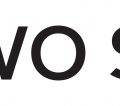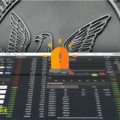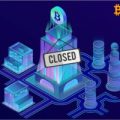George Soros is the one who brought down the Bank of England. And his one of the most profitable hedge funds in the world, and now familyfund - Soros Fund Management, LLC.
True, his trading seems to be based on intuition, and not rigid systematicity.
Story
George Schwartz (Schwartz György), born 12August 1930 in Budapest in a wealthy family of Hungarian Jews. Father Theodore after military captivity on the fronts of the First World War and worked as a lawyer, and then managed the inheritance of his wife - Elizabeth Suts.
The boy received the surname Soros from his father, who replacedher in 1936. The availability of funds helped the family survive the Second World War, avoiding the persecution of the Nazis, thanks to the purchase of false documents by the father confirming that they are Christians. Theodore saved not only his family, but also many other Hungarian Jews, and Soros later wrote that 1944 was “the happiest [year] of his life”, as he gave him the opportunity to witness the heroism of his father.
Future investment genius mastered economics at the London School of Economics, where he was sent by his father two years after the end of World War II.
After graduating from the undergraduate program (1949-1952), the future financier moved to the United States, where his father had connections on Wall Street.
In 1959, after working for FM Mayer for three years,Soros moved to Wertheim & Co. He planned to stay for five years to raise $500,000, after which he intended to return to England to study philosophy. He worked as a European securities analyst until 1963.
Reflexivity theory
During this period, Soros developed a theoryreflexivity, based on the ideas of his mentor from the London School of Economics, Karl Popper. Reflexivity suggests that market prices are often driven by participants' erroneous ideas, and not just the economic fundamentals of a situation. Ideas and events influence each other in reflective feedback loops. Soros argued that this process leads to pro-cyclical "virtuous" or "vicious" cycles of ups and downs in the markets, in contrast to predictions of the equilibrium of a more standard neoclassical economy.
From 1963 to 1973, Soros was vice president ofArnhold and S. Bleichroeder, and this fueled his enthusiasm for working as a manager. Soros Fund Management was founded by George Soros and his former colleague from Arnhold and S. Bleichroeder Jim Rogers in 1969.
Soros fund management
In 1969, Soros formed a fund thatwill become known as the Quantum Fund (a fund that uses a scientific approach, with a base in the form of financial mathematics). At that time, it was one of the new types of investments, later called hedge funds, which served institutional investors and wealthy people, and who used leverage - borrowed money - to bet on stocks, bonds, currencies and goods. Quantum has been successful from the start, earning 40 percent annual profits.
Soros made his most famous deal in 1992the year he bet against the British pound. The currency was vulnerable because its rate seemed unstably high compared to the German mark; With the British recession, Soros reasoned, the British government would ultimately decide that the pound will devalue and not support the high interest rates needed to protect against speculative investors. Soros' brief team to his main trader, Stanley Druckenmiller, was “pushing for a weak spot.” Drakenmiller did this, and on Wednesday, September 16 - On Black Wednesday, as the day was then called, the Bank of England ceases its efforts to support the pound. He quickly dropped to the mark, dropped out of the European exchange rate mechanism, and the bank stepped back from the desire for greater European integration. This transaction brought Soros $ 1.8 billion, it is also believed that he brought down the Bank of England using insider information, in collusion with senior government officials.
In 2011, the company managed assets in the amount of27.9 billion US dollars and ranked sixth in the list of 100 institutional investors. In July of this year, the fund announced plans to return investors a little less than $ 1 billion by the end of 2011, in order to avoid reporting requirements under the Dod Franco Reform Act and focus on family investments. In the same month, Keith Anderson, chief investment officer of the company, left the company and the fund became private.
Strategy
Soros made his fortune during crises,he is a classic "bear", that is, playing for a fall. At the same time, Soros has his own strategy, which he called the "theory of reflectivity of stock markets." According to his theory, for example, the price of a currency (Soros likes to work with foreign exchange markets) is formed based on expectations about this price in the future, which can be pressured, which is what Soros actually does. In addition, Soros is not involved in long-term investments, his transactions are short-lived and speculative. In addition, Soros largely uses borrowed funds for its operations, which also indicates a large speculative component.
Soros considers one of his advantageslack of any specific investment style. In each specific situation, he seeks to adapt to the market situation. So, if 10 years ago his fund invested in foreign exchange market instruments, now industrial investments play a big role. In addition, over time, Soros pays more attention to global macroeconomic trends.
The main method of work, he believes - intuition,Moreover, Soros specifically develops it. He works with hypnotists, creates scenarios for the possible development of events, and then observes which of them was realized. However, Soros himself considers himself a weak analyst and openly says that he is not a specialist in the field of securities.
Many investment guides do not recommendsuccumb to emotions while investing, however, Soros says that now, just like many years ago, he is happy when he wins and is upset if he loses money. Obviously, Soros is a man of non-standard thinking, having his own unique perception of stock markets, he is open and willingly shares his own vision of the market situation, which is described in his books.
Conclusion
George Soros's style is best characterizedin his words: “It does not matter whether you are right or not. The important thing is how much you will gain if you are right and how much you lose when you are wrong. ” In one article it is difficult to consider all his merits and failures. You can learn more about Soros, his biography, financial and political career, bibliography, moreover, in Russian and in quite some detail here.
—————-
By position:
BTCUSD — the short stop moved from -12.76% from the opening point to -3.71%. It’s going well, but I have doubts that it will flow below 7,000.
ETHBTC - the stop at Long is tightened for 2 days, moved from -6.63%, to + 0.28%, conditional breakeven.
————–
From life:
I see Mr. Tinkov and his bank are actively promoting investments in the stock market, and other players have probably started doing this. Moreover, all this from the position of a deposit is evil, buy a share and earn money.
Before grandmothers start shouting from the bench “Son, you fool, short Sberbank!”, I should buy an index for Russian shares) by the way, is it overheating or what? Who is the expert?
——
P.S.How I build my international hedge fund, research, deals and problems along the way, I write everything in my small telegram blog, I will be glad to support and advice – https://t.me/drsombre



